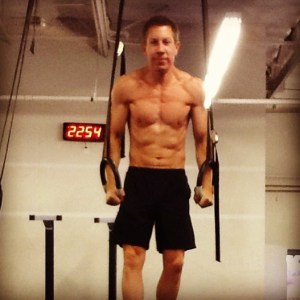
Smoking a Joint
(How’s that for a post title??)
I bet that you or someone you know has, or has had, joint pain at some point in your training career. (I don’t care if you have only been with DNA for 3 classes – you have a training career!) Plenty of people show up with a history of knee pain. Shoulder and elbow injuries crop up in training, and occasionally someone gets a wrist or thumb issue.
Joint pain stinks because of its persistence – it nags and seems to take ages to go away, and rest and ice only help temporarily relieve the pain. What’s an athlete to do?
Check for a referral
Chances are that your joint pain is not originating in the joint. Pain (or other sensations) “refer” when the sensation originates in one place and is felt elsewhere. Reflexology is based on referral – pressure on different parts of your foot can refer to different areas of your body, thus causing or alleviating tension elsewhere.
Precarious balance
Even if you consistently train functional movements, muscle groups may develop unevenly, causing muscle imbalances that can pull a joint…out of joint. For example, tight pectoral (chest) muscles may cause shoulder pain if your lateral and trapezius muscles (in your back) are less developed or looser, and vice-versa.
The other critical pieces of the puzzle
You’ve heard us say this a lot, but you need ample protein and plenty of sleep for your body to repair itself. If you are surviving on a teeny portion of chicken and 6.5 hours of sleep each night, your body is lacking the resources it needs to rebuild itself. You need food as the building blocks, and sleep for hormone release and tissue repair. Don’t skimp – hit your macros, and get 7.5-8.5 hours of continuous sleep! (Sleep-deprived population caveat: new parents, women in menopause, etc. – do the best that you can!)
Troubleshooting the Top Three Joint Problems
1. Knees
Chances are that your feet are causing your knee trouble. If you are wearing bulky shoes, especially cushioned running shoes, your body has to fight for stability through all that mushy rubber. Your feet are designed to deal with stresses from a solid dirt surface, not a pillow. If you are a heel-striker when running, you’re sending a shock through your knee every time you land. Watch a small child run – they pick up their feet and fall forward! Even orthotics can cause problems by artificially positioning your feet.
Troubleshooting: Try flat shoes, especially for heavy lifting and running. For running, start easy – don’t run a 5K on the first day. Some people (moi) get to throw out their orthotics after 15 years, thanks to Vibrams. Give it a try.
2. Shoulders
As mentioned above, your chest muscles and back muscles are probably imbalanced. Most people have trouble activating their back muscles as actively as their chest muscles…after all, you can’t see them! Extra mobility work will help a lot, as will working those bent over rows and pullups. If you have been building 5 rep maxes, rewind and work technique at a lighter weight.
Troubleshooting: Ask a trainer about multidirectional band stretching, and practice it daily as part of your warmup or cooldown. Also try Mark Reifkind’s shoulder stretching tips, and make friends with a pain ball for pecs and your back.
3. Elbows
Pressure in your wrist can make your elbows hurt. Tennis elbow works that way, in fact. If you have been working on muscle ups, heavy bench, or even lots of pushups and have been putting a lot of pressure on your wrists (especially with flared elbows), you may have elbow pain as a result.
Troubleshooting: Take a break from muscle ups, or work bar muscle ups for a while to switch the pressure direction on the wrists. Lighten the load on bench pressing – rewind the weight and pay attention to the angle of your wrist as you lift. Straight wrists are generally better.
Finally, remember to pay attention to your nervous system. Activating your nerves better is a great way to tap into strength, and the neural aspect of the motor units in your body don’t get the respect they deserve. Explosive movements, such as tuck jumps, light thrusters, burpees, or jumping squats, and motion drills such as those taught in Z Health are good ways to prime your nerves for activity. Waking up nerves is a little abstract, but if you have ever felt an electrical storm in your lower back during “Fran,” you can appreciate the amazing power of nerves.
Don’t let a smoked joint slow you down – talk to a trainer for a plan to fix it!

































 In the past I have struggled with my weight constantly going up and down and staying healthy. I’ve always lost weight by taking in less calories and increasing my activity. It was difficult because I would be hungry and tired all of the time.
In the past I have struggled with my weight constantly going up and down and staying healthy. I’ve always lost weight by taking in less calories and increasing my activity. It was difficult because I would be hungry and tired all of the time.
